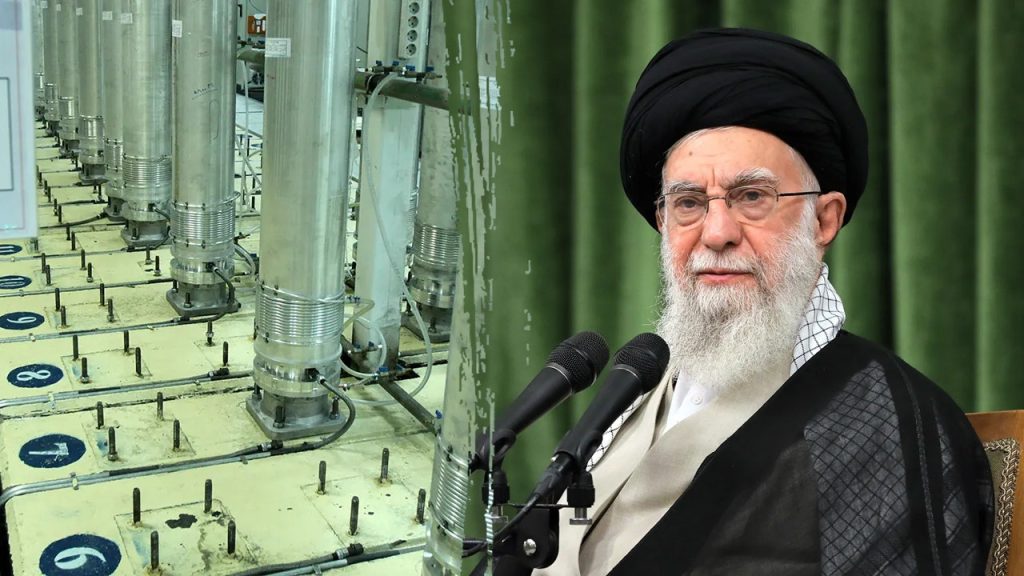The White House harbors a significant concern: Iran’s weakened geopolitical standing might paradoxically propel the regime toward developing nuclear weapons. This anxiety stems from a confluence of setbacks Iran has experienced over the past year, including targeted Israeli operations against its proxy forces, a diminished presence in Syria due to the resurgence of Sunni Muslim factions, and a decline in its conventional military capabilities due to Israeli strikes on critical infrastructure. National Security Advisor Jake Sullivan, recognizing the potential danger, is actively coordinating with the incoming Trump administration to address this complex and volatile situation.
Sullivan’s concern is rooted in the understanding that a weakened Iran, feeling cornered and vulnerable, might perceive nuclear weapons as the ultimate guarantor of its survival and regional influence. He highlights the public pronouncements from within Iran suggesting a reevaluation of its nuclear doctrine, a doctrine that has long maintained a facade of peaceful nuclear ambitions while simultaneously developing the necessary technological infrastructure for potential weaponization. This shift in rhetoric, coupled with Iran’s recent expansion of uranium enrichment to 60% purity – a level alarmingly close to the 90% required for weapons-grade material – fuels the apprehension that Iran might abandon its commitment to non-proliferation.
The confluence of these factors paints a troubling picture. Iran, facing a decline in its conventional military strength and its regional influence, may see nuclear weapons as the ultimate equalizer, a means of deterring further attacks and reasserting its power. The international community, particularly the United Kingdom, Germany, and France, has voiced its concerns over Iran’s nuclear escalation, emphasizing the lack of a credible civilian justification for such high levels of uranium enrichment. This underscores the global anxiety surrounding Iran’s nuclear ambitions and the potential for regional destabilization.
Sullivan’s proactive approach in briefing the incoming Trump team highlights the urgency and seriousness of the situation. He is not only sharing his assessment of the risks but is also actively consulting with Israel, a key regional player deeply concerned about Iran’s nuclear program. The hope is that the Trump administration, despite its previous hardline stance against Iran, can leverage Iran’s current vulnerability to negotiate a new, more robust nuclear deal. Such a deal would ideally curb Iran’s nuclear ambitions in the long term, ensuring regional stability and preventing a dangerous nuclear arms race.
The challenge for the Trump administration is to navigate this complex landscape with prudence and strategic foresight. While the “maximum pressure” policy implemented during Trump’s first term aimed to cripple Iran’s economy and limit its nuclear program, it also arguably contributed to the current sense of desperation within the Iranian regime. A renewed emphasis on this policy could further back Iran into a corner, potentially accelerating its pursuit of nuclear weapons. Therefore, a balanced approach that combines pressure with diplomatic engagement might be the most effective way to address the current crisis.
This delicate balancing act requires careful consideration of all available options, including the possibility of preventive airstrikes, a measure reportedly being considered by the Trump team. However, such an action carries significant risks, potentially escalating tensions in the region and further destabilizing an already volatile situation. The optimal path forward involves a combination of diplomatic pressure, international cooperation, and a nuanced understanding of Iran’s internal dynamics. This will require the Trump administration to engage in a strategic dialogue with its allies and explore all avenues for a peaceful resolution to this critical challenge. The goal must be to prevent Iran from acquiring nuclear weapons while simultaneously addressing the underlying factors contributing to its pursuit of such capabilities.

